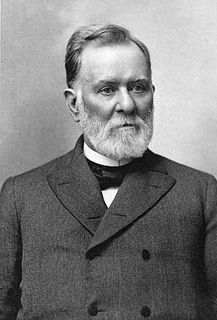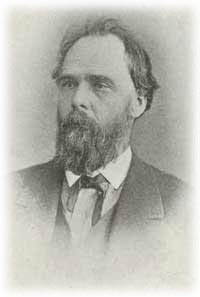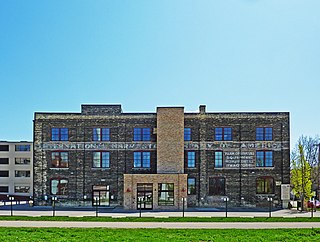
The International Harvester Company was an American manufacturer of agricultural equipment, automobiles, commercial trucks, lawn and garden products, household equipment, and more. It was formed from the 1902 merger of McCormick Harvesting Machine Company and Deering Harvester Company, and remained as a corporation until 1985. Along with the Farmall and Cub Cadet tractors, International was also known for the Scout and Travelall vehicle nameplates.

Raphine is an unincorporated community in Rockbridge County in the Shenandoah Valley in the U.S. state of Virginia.

Case IH is a brand of agricultural equipment. It was created in 1985 when Tenneco bought selected assets of the agricultural division from International Harvester and merged it into its J.I. Case Company Today Case IH is owned by CNH Industrial, which in turn is financially controlled by the Italian investment company Exor, which belongs to the Agnelli family.

The Case Corporation was a manufacturer of construction equipment and agricultural equipment. Founded, in 1842, by Jerome Increase Case as the J. I. Case Threshing Machine Company, it operated under that name for most of a century. For another 66 years it was the J. I. Case Company, and was often called simply Case. In the late 19th century, Case was one of America's largest builders of steam engines, producing self-propelled portable engines, traction engines and steam tractors. It was a major producer of threshing machines and other harvesting equipment, The company also produced various machinery for the U.S. military. In the 20th century, Case was among the 10 largest builders of farm tractors for many years. In the 1950s its construction equipment line became its primary focus, with agricultural business second.

Leander James McCormick was an American inventor, manufacturer, philanthropist, and businessman and a member of the McCormick family of Chicago and Virginia. Along with his elder brothers Cyrus and William, he is regarded as one of the fathers of modern agriculture due to his part in the development of the McCormick Reaper and what became the International Harvester Company. He also owned and developed vast amounts of real estate in downtown Chicago and Lake Forest, Illinois. In 1885, he donated one of the world's largest telescopes to the University of Virginia.

The Cyrus McCormick Farm and Workshop is on the family farm of inventor Cyrus Hall McCormick known as Walnut Grove. Cyrus Hall McCormick improved and patented the mechanical reaper, which eventually led to the creation of the combine harvester. The farm is near Steele's Tavern and Raphine, close to the northern border of Rockbridge and Augusta counties in the U.S. state of Virginia, and is currently a museum run by the Virginia Agricultural Experimental Station of Virginia Tech. The museum has free admission and covers 5 acres (2.0 ha) of the initial 532-acre (215.3 ha) farm.

McCormick Tractors International Ltd. was the company formed in 2000 when Case IH divested assets in order to gain European Union regulatory approval to merge with New Holland Ag. The initial assets of McCormick were the Case IH tractor manufacturing plant in Doncaster, England, the rights to the Case IH model C, CX and MX-C and a licence to build MX Maxxum tractors. Most of the remainder of the Case IH and New Holland assets became CNH Global.

Deering Harvester Company was founded in 1874 by William Deering. In 1902, Deering Harvester Company and McCormick Harvesting Machine Company, along with three smaller agricultural equipment firms merged to create the International Harvester Company which is still in operation today as the Case IH operations of CNH Global.

Lewis Steward was a U.S. Representative from Illinois. He also co-founded Marsh, Steward & Company, a company that later merged to become International Harvester.

Dayton's Bluff is a neighborhood located on the east side of the Mississippi River in the southeast part of the city of Saint Paul, Minnesota which has a large residential district on the plateau extending backward from its top. The name of the bluff commemorates Lyman Dayton, for whom a city in Hennepin County was also named. On the edge of the southern and highest part of Dayton's bluff, in Indian Mounds Park, is a series of seven large aboriginal mounds, 4 to 18 feet high, that overlook the river and the central part of the city.

The Georgia State Railroad Museum is a museum in Savannah, Georgia located at a historic Central of Georgia Railway site. It includes parts of the Central of Georgia Railway: Savannah Shops and Terminal Facilities National Historic Landmark District. The complex is considered the most complete antebellum railroad complex in the United States. The museum, located at 655 Louisville Road, is part of a historic district included in the National Register of Historic Places.

The Ficke Block is a historic building located in downtown Davenport, Iowa, United States. It was individually listed on the National Register of Historic Places in 1983. In 2020 it was included as a contributing property in the Davenport Downtown Commercial Historic District.

Warder Public Library is a historically significant building in Springfield, Ohio, United States. A robust example of Richardsonian Romanesque architecture, it was a gift to the city from industrialist Benjamin H. Warder, and served as the main branch of the Clark County Public Library from 1890 to 1989. It now houses the Clark County (Warder) Literacy Center.

The McCormick–International Harvester Company Branch House is located in Madison, Wisconsin. It was built in 1898 and added to the National Register of Historic Places in 2010.

CNH Industrial N.V. is an American Italian multinational corporation with corporate offices in Amsterdam and Basildon. It is controlled by the investment company Exor, which in turn is controlled by the Italian Agnelli family. The company is listed on the New York Stock Exchange and on Borsa Italiana: it is a constituent of the FTSE MIB index.

William Wallace Marsh was a Canadian American inventor and businessman who co-founded Marsh, Steward & Company with his brother Charles. Born in Ontario, Canada, Marsh developed an early harvester prototype on the family farm in DeKalb County, Illinois, United States. With help from businessman Lewis Steward, Marsh, Steward & Company became an early leader in harvester production. The company later merged with others to form International Harvester. Marsh lived in Sycamore, Illinois from 1873 until his death, serving as a longtime alderman.

State Savings Bank, also known as the Old Savings Bank, is a historic building located in Council Bluffs, Iowa, United States. the bank was established in 1889, and was originally located across the street. Planning for this building began in 1941 with the organization of the State Investment Company, which would build and own the building. It was designed by W.G. Knoebel and built by St. Louis-based Bank Building and Equipment Corporation of America. It is a late example of Art Deco, and it's the only building in Council Bluffs that exhibits this style. Two-thirds of the building is a single-story banking facility, and the rest is divided into two-stories of office space. It has one of the first drive-through teller windows in Iowa. The rectangular building's exterior is finished in gray limestone on two elevations, and a wrap-around continuation on a third. Its primary decorative feature is an inscribed harvest motif on the east and west elevations that are mirror images of each other, oriented to the north. The motif features a male nude holding a wagon wheel and a scythe, with sheaves of wheat and a dog.

The Pioneer Implement Company, also known as the International Harvester Transfer House, is a historic building located in Council Bluffs, Iowa, United States. Eli Shugart, Ferdinand Weis and F.R. Davis formed Pioneer Implement Company in 1893, and they built the four-story Late Victorian section of the building the same year. This was during a period of growth in the city's "Implement District," which is located to the south of the central business district. What made this company standout from the others in the district is that it was locally owned and operated agricultural implement business, rather than one owned by a factory from the east. The company went out of business in 1915 and the building was taken over by International Harvester, which owned the building next door. They added the single story brick addition to the south in 1927. When IH closed their Council Bluffs operation in 1964 they were the only farm implement that was still in business in the Implement District. The building was occupied by various businesses after that, including United Parcel Service. Artspace, Inc. acquired the building and converted it into live/work spaces for artists. The building was listed on the National Register of Historic Places in 2008.

The YMCA Building is a historic building located in Council Bluffs, Iowa, United States. Construction of the building was partially funded by railroad magnet Grenville M. Dodge. The front section, designed by local architect Frederic E. Cox, was completed in 1909. The pool/gymnasium addition in the rear of the building was designed by J. Chris Jensen, another local architect, and completed in 1931. The front section is four stories tall and exhibits elements of the Colonial Revival and Federal styles. The fourth floor was renovated in 1931 and the shed dormers may have been added at that time. The rear addition is architecturally sympathetic to the original section of the building. The Union Pacific Railroad bought the building in 1929 so the facilities would be available for the men who worked on the railroad during the Great Depression. The local YMCA took over ownership again in 1955. The building was listed on the National Register of Historic Places in 1979.

The Middle Avenue Historic District is an industrial historic district located on two square blocks in downtown Aurora, Illinois. The district includes eleven buildings, eight of which are contributing buildings to its historic nature. The district formed in the early 20th century along a Chicago, Burlington and Quincy Railroad branch known as the Alley Job, and its buildings fall into three main categories: factories, distribution buildings, and warehouses. The district's factories include facilities operated by the Pictorial Printing Company and the typewriter ribbon company Miller-Bryant-Pierce. Distribution and office buildings in the district include multiple buildings owned by International Harvester and the McCredie Building, which was used by various coal businesses. The district also includes three warehouses and a filling station.























